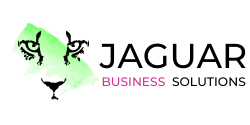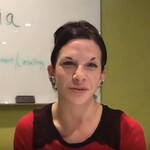Social media is everywhere… You almost can’t get away from it!
Love it or hate it, social media can be a powerful lead generation method for growing your business and your career.
Originally launched in 2002, LinkedIn has now grown to over 500 million users, making this social media platform a B2B gold mine.
So, if you are trying to target small- to medium-sized business owners or C-level executives, then you should have a presence on LinkedIn.
However, your presence on LinkedIn involves a lot more than a few sentences about your last job, a profile photo from your fishing trip last summer, and sharing your favorite quote from your best friend.
If you are trying to develop and sell your personal brand on LinkedIn, then your profile needs to be sharp and planned strategically.
After all, 20 percent of your LinkedIn profile makes 80 percent of the impact. Because the majority of recruiters and potential clients are often pressed for time, they tend to skim quickly. The wordier your profile is, the less likely potential connections will click that “Connect†button.
In this article, we will provide you with some tips and tricks on how to make your LinkedIn profile stand out, transforming it into a powerful lead gen source.
The Top 4 Common LinkedIn Mistakes
Before we dive into how to write a stellar LinkedIn profile, let’s first talk about what not to do. Some of the most common mistakes among LinkedIn users include:
-
Being too wordy. LinkedIn clips your text after around 40 words, and many users won’t click “see moreâ€â€“unless you give them a really good reason to.
-
Not stating what sets you apart. If the most important bits of information aren’t at the top, many potential connections won’t see them.
-
Lacking selectivity. It’s a LinkedIn profile, not your life story from first grade. Yes, it’s a good idea to add some personal details, but make sure they’re relevant and support the rest of your brand and story.
-
Using too many acronyms. Sure, people within your industry might know what “CMS†means, but your customers may not. Take the time to write out what acronyms mean rather than assuming your audience understands what you’re talking about.
Instead, best practice for LinkedIn profiles requires a strategic approach, plenty of editing and re-editing, and a touch of finesse.
The Right Way to Write a LinkedIn Profile
The first step? Your LinkedIn profile summary. This is the best tool you have at your disposal. When writing your LinkedIn profile and summary, keep the following tips in mind…
1. Be Present and Authentic. First and foremost—recruiters, leads, customers, and other potential connections want to know what makes you tick, and what sets you apart from the rest. They want to know whether you’ll be a solid member of the team, that you will fit within their company culture, and that you provide unique solutions that solve their problems and meet their needs.
Avoid writing your profile like a robot. Instead, write your LinkedIn profile as if you were sitting across the table from your audience having a conversation.
2. Get Personal (But Not Too Personal…) Who are you besides an entrepreneur? Do you serve on a committee you’re passionate about or participate in speaking panels about important causes?
Whatever makes you tick and passionate about deserves a mention on your LinkedIn profile. A sentence or two is usually enough, but if you’re mentioning interests that are specifically related to your career, then you can usually go into a little more detail.
3. Build Your Brand Message. Next to your profile summary, your brand message is next in line in terms of importance. Building a brand message isn’t just for huge corporations; entrepreneurs, startups, and small business owners can have one as well. In fact, a solid brand message goes a long way in telling potential connections, leads, and customers a lot about who you are and what you stand for.
So, how do you craft an awesome brand message? Start small: Figure out what you want to say. Do you want to tell your target audience about a great product or service? Do you want to tell them about how your business contributes to society, or makes the world a better place?
Find your key message and roll with it.
4. Yes, Word Choice Matters. Companies spend plenty of time sifting through buzzwords like “pain point†and “synergize†and “innovationâ€. Buzzwords don’t stand out.
Rather than throwing out a word that your competition also uses, choose a synonym that sounds less like jargon and more natural.
Here are a few examples:
-
Detail-oriented team player = manage projects with a team-centric approach
-
Think outside the box = open-minded, creative, and agile problem solver
-
Mining Big Data to find opportunities for Business Process Outsourcing = analyze unique methods to optimize existing processes
You get the point…
5. Use Real-World Examples. Data points are your best friend when it comes to your LinkedIn profile summary. Find every opportunity to substantiate your skills and accomplishments with actual facts.
Here are some example metrics you can add:
-
Managed company operations: Decreased operational costs by $1,000 monthly by identifying process inefficiencies.
-
Handled project management via CMS: Reduced late asset delivery by 10 percent by implementing an automated CMS system.
-
Audited company website’s SEO: Increased impressions by 5 percent and doubled clickthrough rates over a quarterly period by optimizing website SEO.
Performance metrics are extremely valuable on LinkedIn because so many professionals neglect to use them in their profiles. This is a huge opportunity to get ahead of the competition by showing how you actually get it done.
6. Keep it Short and Sweet. As we mentioned above, an overly-wordy LinkedIn profile can deter potential clients, recruiters, and connections. Remember, although an 800-word summary of your entire career might be appropriate on your professional website, it isn’t always the best option on a fast-moving social platform such as LinkedIn.
Keep your profile between 300-400 words. If it doesn’t serve to express who you are as a professional and what you bring to the table, then ditch it.
If you are someone who likes to write at length about your professional experience, then save your long-form writing for LinkedIn articles and posts. One of the unique features of LinkedIn is that you can write articles or blog posts directly from your profile. Those articles then stay on your profile and become a great source of evergreen content. You can also share documents in your LinkedIn posts.
7. Don’t Forget Keywords. LinkedIn users find one another in two ways: 1) through mutual, second-degree, or third-degree connections; and 2) through keyword searching.
And, yes, keywords are still important when it comes to SEO and visibility. You can optimize your profile in three simple steps:
-
Perform keyword research. Some great tools for SEO research include SEMrush and Ahrefs.
You’ll want to pull up peripheral and primary keywords having to do with your industry… e.g. if you’re a content marketer, your primary keywords might include content management and content marketing specialist, while your peripheral keywords could include social media marketing, B2B marketing, and project management.
-
Edit your summary. Look for opportunities to use a keyword as a synonym for a concept you’ve already expressed. Avoid “stuffing†keywords into sentences where they don’t fit.
Make sure that the first sentence of your summary and your headline both include a primary keyword, if at all possible—if it’s not, then consider rewriting that first sentence to make it fit.
-
Include your specialties. A great way to increase keyword visibility on LinkedIn is to include a “specialties†section to show off your areas of expertise and skill. A simple bulleted list gives you space to work in your keywords naturally without worrying about stuffing.
8. Make Connections and Build Relationships. The most important thing to understand about LinkedIn is that your success depends on the strength of your relationships with your connections. The stronger your relationships, the greater and more valuable the connections. By building strong relationships, you are increasing your chances for lead generation and even greater sales opportunities.
So, the question then becomes: How do you build strong relationships with your connections? Engage with them.
How to Beef Up Your LinkedIn Profile Today
Following these simple tips should leave you with a shiny and effective LinkedIn profile, ready to show recruiters and connections why you’re great at what you do.
Of course, we don’t always have the time or the ability to rewrite a LinkedIn profile, especially in the midst of running a business. If you need a new personal or business page LinkedIn profile, Jaguar Media Solutions can help. Our content services are powerful and results-oriented without compromising your budget.
Your potential next opportunity on LinkedIn won’t wait, so neither should you. Get your free consultation today!

